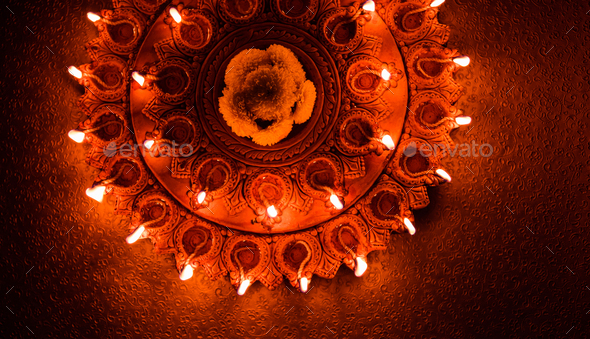Diwali is finally here, and we all, away from our hometowns, made a beeline to our homes. Our schedule is almost monotonous every year – cleaning, making faral (traditional Maharashtrian snacks), facilitating rangoli making, and shopping, to name a few. While strolling at my home after almost six months, I encountered some plastic diyas. A small LED bulb was at the centre, which would run on some cell battery. I was fetching the button, and my sister yelled at me and said there is no button here. She said, “Varun, it will start lighting up once you put some water in it.” I said – “What! How is it even possible”. Astonishingly, I put a spoonful of water in the lamp and unbelievingly experienced the magic.
The story that ran in my mind the next moment was that of Sai Baba of Shirdi. I have never been a devotee of Sai, but I always held him in high regard as he stands for me, a symbol of secularism and simplicity. Till the end of his life, he refused to either identify himself as a Hindu or a Muslim. His teachings were entirely humanist and asked people to read their scriptures themselves. To summarise, he synchronised a bit of Advaita Vedanta with Sufism and preached to the people of Shirdi. I believe the Almighty endows some mystical prowess to such people, so the commoners should take their thoughts strongly. Sai Baba would have been bestowed with similar powers so that people would heed his thought process.
One of the mystical acts was when Sai lighted one of the diyas with water instead of oil! I cannot affirm if this happened in reality or propaganda of Bollywood, but for a moment, let us assume this story is true. The story starts with a girl not getting oil to light diyas during Diwali. She went to almost every home of Shirdi but in no vain. Finally, she went to dwarkamayi – the masjid where Sai used to live. She told Sai about her fruitless venture of getting oil. Sai poured water into her diyas and asked her to light them. To everyone’s astonishment, the diyas flamed! A Fakir helping a Hindu girl to light diyas and that too with water – became the talk of the town, and this incident gave additional legitimacy to Sai as a religious preacher.
I came out of the story and saw the lamps again. I exclaimed to my sister – “Sai Baba incarnated in science.” We finally can light a diya with water. The water sensor LED diyas are interesting. One such Diya set was as less expensive as 60 rupees. The Diya is nothing but an incomplete circuit, and it gets complete once we add the tap water. Science made it possible to reduce this incomplete circuit to a Diya safely. If a regular oil lamp lasts a few hours, this diya will work at least fifty hours. Additionally, it will not consume oil or would produce additional smoke. Except for giving the FEEL of a lamp, the water sensor diyas fulfil most of the functions of diyas.
The article nowhere hints at the endorsement of water-sensor diyas or wants the reader to purchase them. I want the readers to think about science’s progression and mysticism’s adoration. We did not make Sai Baba a hero for his teachings, simplicity, or secular mindset. A few who go to Shirdi have worked through synchronised faith that involves good Sufism and Advaita Vedanta. A rare soul might be detesting the castism that Sai Baba sermonised against. But we venerate that mystic power that might be secondary to his teachings.
A simple Diya taught me a big lesson I should remember. Narsi Mehta, a saint-poet of Vaishnava tradition, taught –
रामनाम शु ताळी रे लागी,
सकळ तीरथ तेना तनमां रे ॥
The Gujarathi lines say, “I am clapping my hands so ecstatically that all the sacred places enter my body.” This Diwali, about 22 lakh diyas got lit at Ayodhya – the disputed land the H’able Supreme Court gave Hindus to build the temple. The Diya in my home symbolised the progress of science, and the Diyas at Ayodhya represented the victory of majoritarian jingoism going on for decades. Narsi’s words would mean no value today as the Hindus have resorted to something quite the opposite of the Bhakti tradition.
Our society is representing these three Diyas. The first one represents the belief of Indians in multitudes of mysticism and idolatry. The second diya is the Diya of Ram Mandir at Ayodhya, which obviously means neo-nationalism engineered by Modi and his comradery. However, the third one tells the story of the progress of science that brought Sai Baba’s diya into reality. Let us hope for the latter one shines so high that the lights of the other two get dim and dim, day by day.
